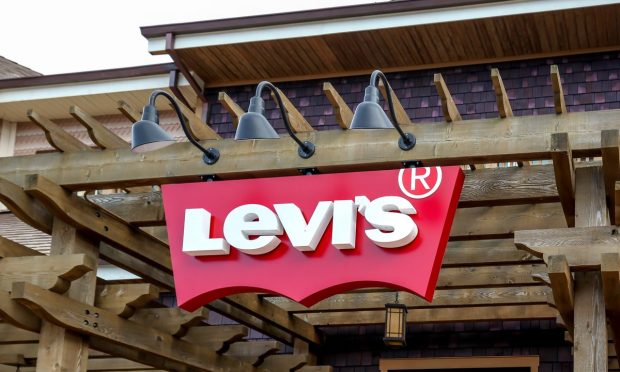Levi Strauss Enters Activewear As Consumers Crave Casualization And Comfort

Levi Strauss & Co. (LS&Co.), famous for its denim jeans, is expanding its horizons to athletic apparel with the purchase of Beyond Yoga as consumers remain reluctant about fully returning to pre-pandemic fashion after months of comfort.
Beyond Yoga was founded in 2005 and offers women’s athleisure wear, including leggings, joggers, biker shorts and bras, in sizes from XXS to 4X. This is the first foray into the activewear category for Levi Strauss, which in addition to its eponymous labels also owns business casual brand Dockers.
Chip Bergh, president and CEO of Levi Strauss, said in a statement that he sees “tremendous growth potential” in Beyond Yoga.
“The foundation the Beyond Yoga team has built, combined with LS&Co.’s resources, global reach and scale, make me confident that Beyond Yoga will become a powerful growth engine for LS&Co.,” he said.
The acquisition will be financed with cash and is expected to close in the fourth quarter, though the size of the deal was not disclosed. Levi Strauss did not immediately return a request for comment from PYMNTS.
Following completion of the acquisition, Beyond Yoga will operate as a standalone division within Levi Strauss, with Co-Founder Michelle Wahler remaining CEO of the brand. Wahler said in a statement that she is “thrilled” to have Levi Strauss’ clout to help expand Beyond Yoga to a wider audience. “Joining their portfolio will enable us to accelerate our growth by leveraging the experience and resources of their team and their global infrastructure,” she said.
Levi Strauss intends to expand Beyond Yoga’s direct-to-consumer (D2C) capabilities, including through brick-and-mortar retail, as well as further developing its wholesale footprint with “premium partners.” In addition to being sold directly to consumers online, Beyond Yoga products are currently carried by Nordstrom, REI and several other retailers.
Taking On Athleisure
The acquisition comes amid increasing competition in the activewear segment, which is putting pressure on longtime titan Lululemon. Earlier this week, footwear company Wolverine Worldwide acquired U.K.-based D2C athletic apparel brand Sweaty Betty with intentions of expanding the label’s U.S. reach through new retail locations. Meanwhile, Victoria’s Secret has started a new collection of athletic wear, part of the retailer’s rebirth after years of faltering, and Kate Hudson-backed Fabletics reportedly is preparing for a $5 billion initial public offering.
Readers also liked: Increased Athletic Apparel Competition Has Lululemon Sweating
To be sure, Lululemon is a force to be reckoned with, with D2C sales accounting for over half its revenue in 2020. In the company’s first quarter, which ended May 2, the Vancouver-based retailer generated $1.2 billion in sales, marking an 88 percent increase in revenues — including 50 percent growth in eCommerce, with 45 percent penetration of its D2C business.
Levi Strauss, however, has a robust D2C presence of its own that will now extend to Beyond Yoga. Chief Financial Officer Harmit Singh told investors and analysts last month that about 40 percent of the company’s business is currently D2C, but the goal is to reach 60 percent.
“DTC sales, both brick-and-mortar and digital, have our highest gross margins, and our strategies will drive DTC to a higher percentage of our total business in the years ahead,” Singh said.
Opportunities In Casualization
Levi Strauss has also been focused on making its core denim products more comfortable as the pre-pandemic casualization trend and demand for denim meets the post-pandemic desire for comfort.
For example, Levi Strauss has increased emphasis on its first baggy-fit jeans, which were introduced prior to the pandemic but gained traction over the last 18 months. Looser, baggier fits accounted for almost half of both men’s and women’s sales in the three months ending May 30.
“I think it is fundamentally being driven by the casualization trend and it gives me a great deal of confidence as we go forward,” Bergh said last month.
See more: Levi Strauss Adapts To Shifting US Waistlines And Supply Chain Challenges
The CEO also noted that approximately 35 percent of U.S. consumers changed waist sizes during the pandemic, which “creates another reason for people to go out and update their wardrobe.”
“As the pandemic fog lifts and more people get vaccinated to return to social activities, as lockdowns lift, people are now starting to go back to the office in many parts of the world,” he said. “All of this creates a new wardrobe opportunity.”
